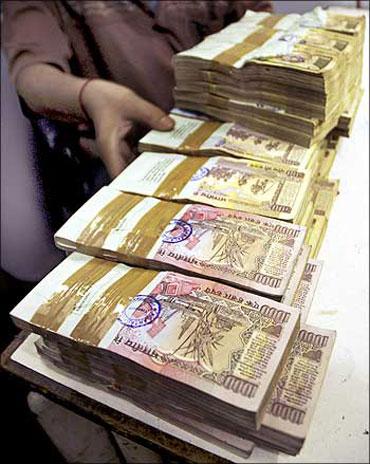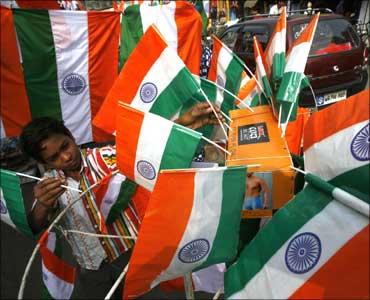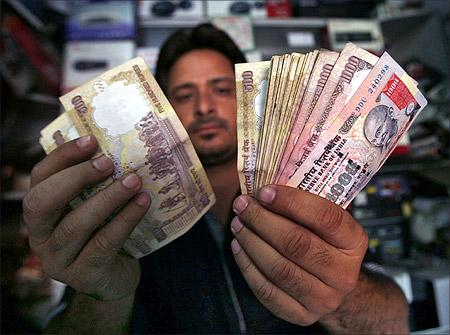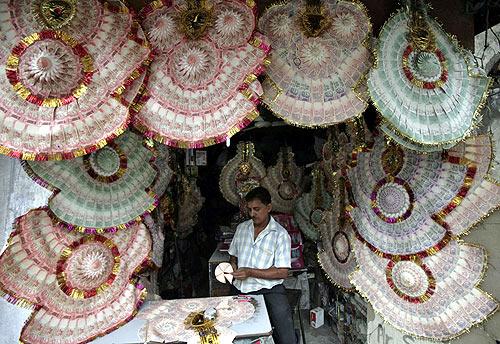
The Vijay Kelkar committee has cautioned that India's current account deficit (CAD) might rise to a record 4.3 per cent of gross domestic product (GDP) in 2012-13 if reforms to address this do not take place.
The panel, asked to recommend on consolidation of government finances, also observed that foreign exchange reserves and currency vulnerability resemble those in the infamous 1990-91 balance of payments crisis.
In fact, if no reforms of the type it recommends are undertaken, our economic situation could be worse than in the 1991 crisis, it has warned.
...

Dissent
However, this is the worst-case scenario, and the CAD for 2012-13 might actually lie be 3.5-4 per cent of GDP, economists said, due to a rise in services exports and slowing in imports due to a slowing economy.
More, the comparison with 1990-91 seems exaggerated, aver some, as forex reserves are comfortable at $293 billion, as of September 21.
The CAD was 3.9 per cent of GDP in the first quarter ended June, higher than the 3.8 per cent of GDP in the corresponding period last year. In value terms, the CAD was lower at $16.6 bn against $17.5 bn at the same time last year but the CAD-GDP ratio was higher, on account of a lower GDP base in dollar terms.
...

The rupee was in the 45-48 (to the dollar) range in the first quarter of 2011-12, whereas it was 55-56 in Q1 of 2012-13.
In case of the "do-nothing scenario", the Kelkar report said CAD, 4.2 per cent of GDP in 2011-12, could deteriorate further this year. "CAD could be possibly at 4.3 per cent of GDP this year, at a time when the world market and capitals flows are exceedingly fragile and where financing of this magnitude is creating huge risks for macroeconomic and external stability," it said.
Economists spoken to did not feel India would see a record CAD this year. "It will be about 3.5 per cent of GDP, as imports are declining due to a slowing economy," said D K Joshi, chief economist, CRISIL. YES Bank analysis projects CAD at 3.6 per cent of GDP in 2012-13, on the back of an improvement in net invisible inflows.
...

The invisibles trade was $25.9 bn in Q1, down from $27.5 bn last year, due to slowing demand from the US and Europe.
Merchandise exports contracted 2.6 per cent in the first quarter and its imports fell 3.6 per cent, narrowing the overall trade deficit to $42.5 bn from $51.5 bn in the fourth quarter of 2011-12.
The report went on to add that forex reserves were falling, and the currency especially vulnerable. "The combination is reminiscent of the situation last seen in 1990-91," it said.
...

In the 1990-91 BoP crisis, CAD was three per cent of GDP. Our gold reserves are at $26.2 bn and forex reserves at $293 bn. In 1991, the latter were at $1.2 bn in January and had depleted 50 per cent by June, where India could finance just three weeks' worth of imports.
Also in 1991, the rupee had to be devalued by 18-19 per cent against major currencies. Today, it has begun rising again, up four per cent against the dollar in the past 15 days and having closed at a five-month high of 52.85 last week due to heavy capital inflows.
"We now the expect rupee to trade close to 52-54 by December and to gradually move towards 50-52 by March," said Shubhada Rao, chief economist, YES Bank.
...

And, yet...
However, economists agree that the rupee has started appreciating because of the reforms announced by the government on foreign direct investment and fuel price corrections. These lifted market sentiment.
The Kelkar report said the consequences of not quickly taking credible effective measures for correcting the current fiscal deficit is likely to be a sovereign credit downgrade and flight of foreign capital.
"This will invariably further weaken the rupee and negatively impact the capital markets and the banking sector. In addition, the situation leaves little head room for counter-cyclical policy measures in the event of another global crisis," it said.
Arun Singh, senior economist, Dun and Bradstreet, said he agreed that CAD was a big concern at the moment and felt it would be around four per cent of GDP in 2012-13. "Exports to the US and Europe are falling, while upward pressure on oil prices remain," he said.